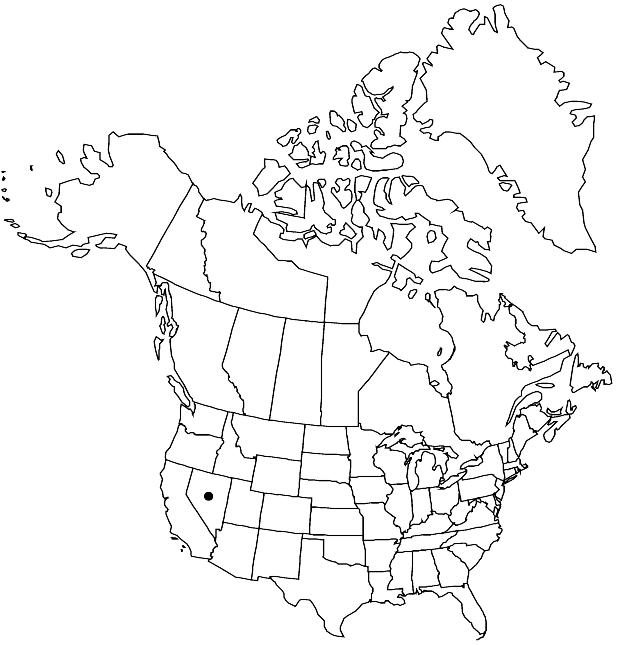Physaria pendula
Novon 12: 326. 2002.
Perennials; caudex simple; densely pubescent, trichomes 5–7-rayed, rays bifurcate or trifurcate. Stems several from base, erect or outer usually decumbent toward base, (from below a terminal tuft of mostly erect leaves, unbranched), 1–2 dm. Basal leaves: blade ovate to elliptic, 2–4 cm, (base gradually narrowed to petiole), margins entire, (surfaces densely pubescent with trichome layers). Cauline leaves (remote, proximal shortly petiolate); blade spatulate to oblanceolate, similar to basal, (base often cuneate), margins entire. Racemes elongated. Fruiting pedicels (recurved), 7–10 mm. Flowers: sepals linear-oblong, 5–7 mm, (lateral pair subsaccate); petals (erect), lingulate, 8–10 mm, (claw barely differentiated from blade). Fruits (usually pendent, sessile), subglobose, slightly flattened (angustiseptate), 4–5 mm; valves densely pubescent, trichomes somewhat spreading; ovules 8–12 per ovary; style 4–5 mm. Seeds plump, (mucilaginous when wetted).
Phenology: Flowering May–Jun.
Habitat: Limestone gravel and cobbles, typically with junipers
Elevation: 1700-2100 m
Discussion
Of conservation concern.
Selected References
None.
Lower Taxa
"elongated" is not a number."thick" is not a number."dm" is not declared as a valid unit of measurement for this property.
